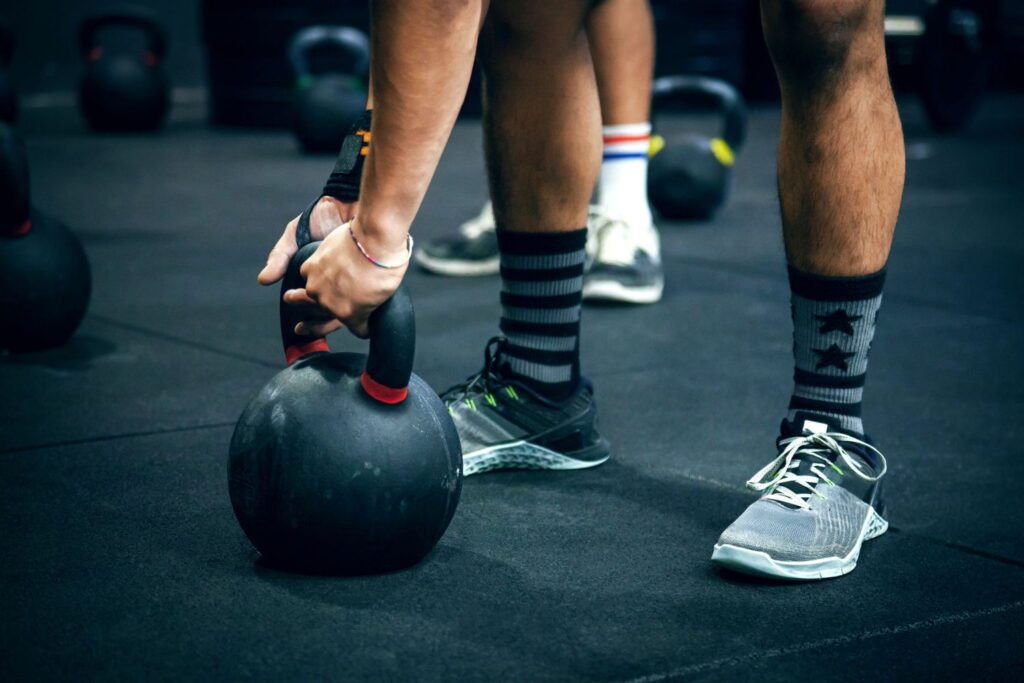Lifting a 100 lb kettlebell isn’t just a physical challenge—it’s a true test of strength, endurance, and mental toughness. If you’ve been working with lighter kettlebells and feel like you’ve hit a plateau, this might be the challenge you need to push your limits and reach new heights in your fitness journey. But before you dive into lifting such a heavy weight, it’s important to understand the demands of a 100 lb kettlebell and assess your readiness. In this guide, we’ll explore the challenges, preparations, and advanced exercises that will help you master the 100 lb kettlebell. Let’s see if you’re up for the challenge!
Challenges of a 100 lb kettlebell
Lifting a 100 lb kettlebell is no small feat. This weight represents a significant jump from the more commonly used kettlebells, like 50 or 60 lbs. The challenge lies not only in the sheer weight but also in the control and technique required to lift and maneuver it safely. Unlike lighter weights that can be swung or lifted with relative ease, a 100 lb kettlebell demands full-body engagement. Every muscle, from your core to your legs and arms, needs to work in harmony to manage the weight effectively.
The heavier the kettlebell, the more it challenges your balance, coordination, and grip strength. You’ll notice that even basic exercises like the kettlebell swing or deadlift feel entirely different when using a 100 lb kettlebell. The weight pulls harder on your muscles, making it more difficult to maintain proper form and control. This is where the risk of injury increases if you’re not fully prepared or if your technique isn’t spot on. Understanding these challenges is the first step in preparing to conquer the 100 lb kettlebell.
Still, lifting a 100 lb kettlebell or an even heavier barbell comes with their benefits. See how lifting heavy weights can build muscles faster.
Assessing your readiness for a 100 lb kettlebell
Before you even think about picking up a 100 lb kettlebell, it’s essential to assess whether you’re truly ready for this advanced level of training. Here’s what you need to consider:
Physical strength requirements
First and foremost, you need to evaluate your current strength levels. Have you been consistently working with lighter kettlebells, such as 50 or 60 lbs, and do you feel confident in your ability to control those weights? If you can easily perform kettlebell swings, deadlifts, and presses with these lighter weights, you might be ready to try a 100 lb kettlebell.
However, if you struggle with these exercises or if your form isn’t solid, it’s best to build up your strength gradually. Rushing into heavy weights without the proper foundation can lead to serious injuries.
Mental preparation
Lifting a 100 lb kettlebell isn’t just about brute strength; it’s also a mental challenge. You need to be mentally prepared to face the weight and stay focused throughout your workout. It’s easy to become intimidated by the sheer size and weight of a 100 lb kettlebell, but mental toughness is what will help you push through the challenge.
Visualization techniques, where you imagine yourself successfully lifting and controlling the kettlebell, can be incredibly helpful. Additionally, positive self-talk and setting realistic expectations will keep you motivated and on track.
Advanced kettlebell exercises to try
These exercises are designed to push your limits and help you build power, stability, and overall fitness.
100 lb Kettlebell Deadlifts
The deadlift is a fundamental exercise that targets your posterior chain, including your hamstrings, glutes, and lower back. When performed with a 100 lb kettlebell, the deadlift becomes an intense full-body workout that requires strength, stability, and proper form. To execute a kettlebell deadlift, stand with your feet shoulder-width apart, place the kettlebell between your feet, and hinge at the hips while keeping your back straight. Grip the kettlebell with both hands, engage your core, and lift by extending your hips and knees. Lower the weight back down with control, focusing on maintaining a neutral spine throughout the movement.
Heavy Kettlebell Swings
Kettlebell swings are a staple in any kettlebell workout, and using a 100 lb kettlebell takes this exercise to the next level. The swing is a dynamic movement that targets your hips, glutes, and core, building explosive power and improving cardiovascular fitness. To perform a heavy kettlebell swing, start with the kettlebell in front of you, hinge at the hips, and swing the weight back between your legs. Then, explosively drive your hips forward to swing the kettlebell to shoulder height. Keep your arms relaxed and let the momentum generated by your hips power the movement.
Kettlebell Turkish Get-Up
The Turkish Get-Up is one of the most challenging kettlebell exercises, requiring a combination of strength, mobility, and coordination. When performed with a 100 lb kettlebell, this exercise becomes an advanced test of your full-body control and stability. The Turkish Get-Up involves a series of movements, starting from lying on your back and ending in a standing position, all while keeping the kettlebell overhead. This exercise targets nearly every muscle in your body, making it an excellent choice for building strength and improving overall functional fitness.
If you are looking to increase your strength and lift heavier, get in touch with our personal trainers in South Congaree.
Final thoughts
Taking on a 100 lb kettlebell is no small challenge—it’s a test of your physical strength, mental toughness, and overall fitness. If you’ve assessed your readiness and are prepared to push your limits, this powerful tool can help you achieve incredible results. From building muscle mass and enhancing your endurance to improving your coordination and mental focus, the benefits of training with a heavy kettlebell are immense.







